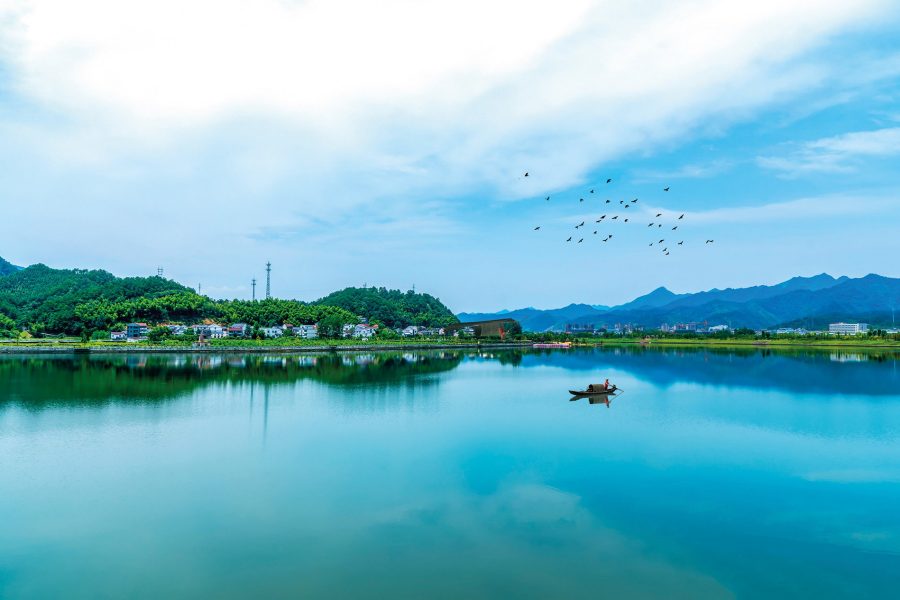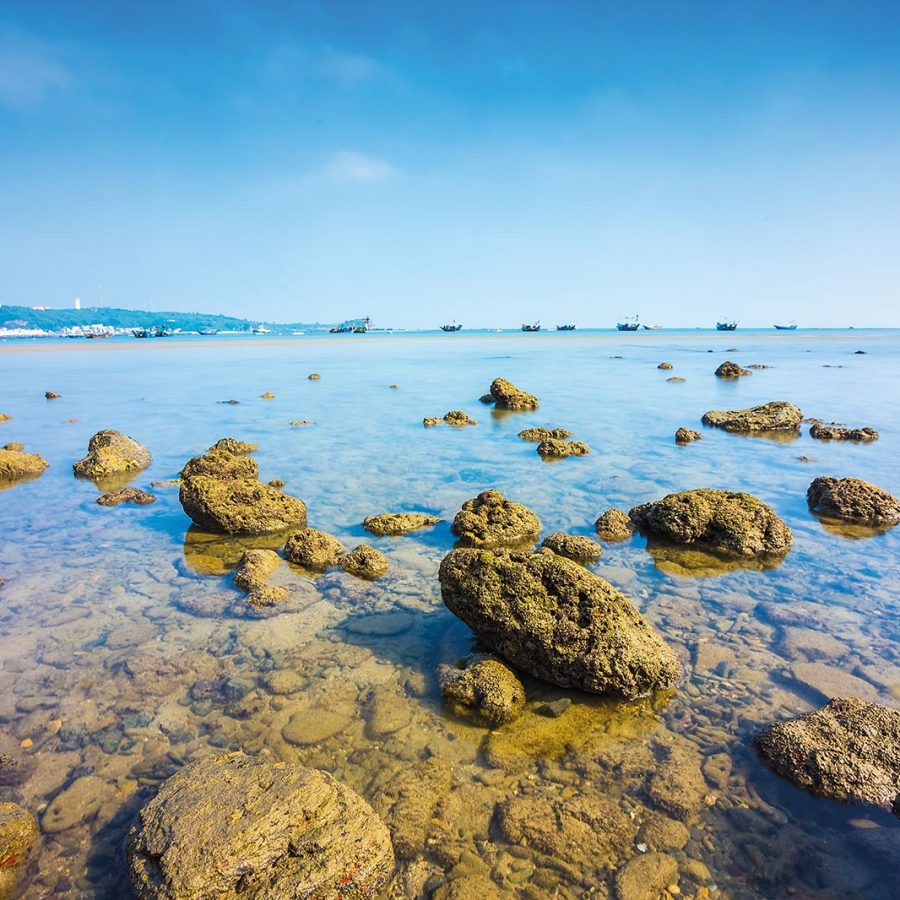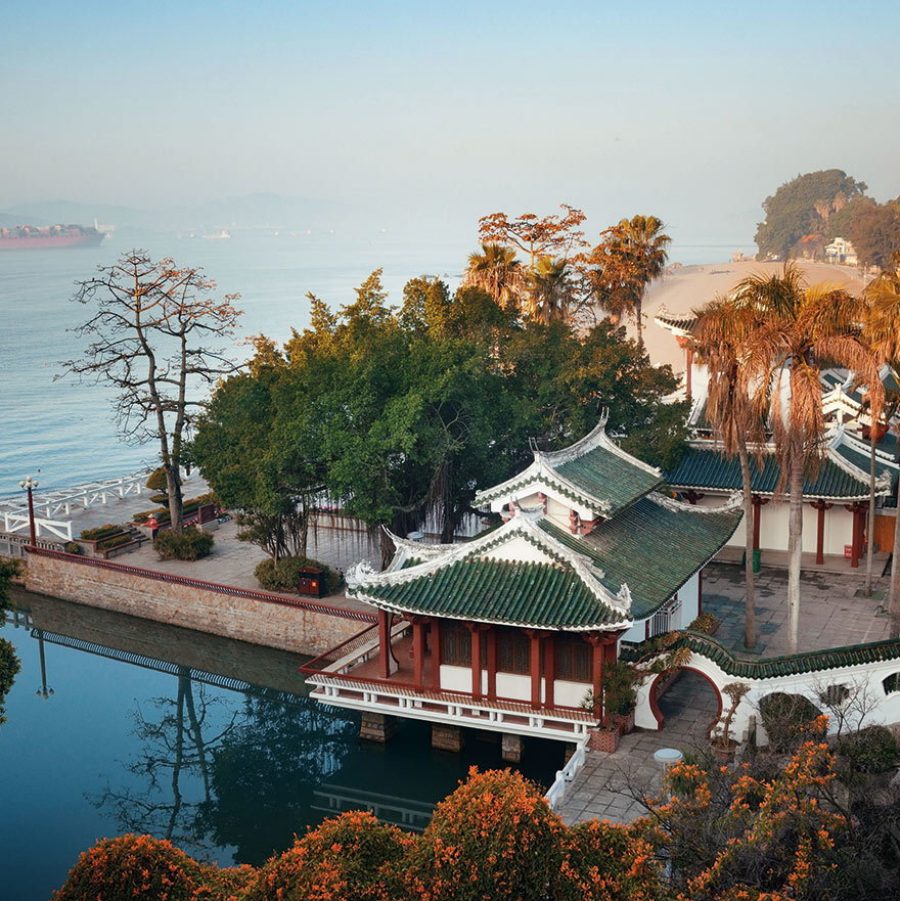5 Amazing Island Experiences You Can Enjoy in China

Skip: El Nido
See: The city underneath Qiandao Lake
When state scientists were looking for a Chinese island to farm high-end caviar in China, they looked for the purest, cleanest water they could find. That turned out to be Qiandao Lake, an expansive body of water in the lush hills outside of Hangzhou.
Qiandao, which means ‘1,000 islands’, was created in 1959 when the area was flooded for the construction of a hydroelectric power station. The nearly 600-square-kilometre area’s once hilly peaks have now become more than 1,000 islets, and sightseeing boats ferry visitors between the most picturesque. One of the highlights is Meifeng Island, where you can hike up to a viewing platform – Qiandao Lake’s highest point – for a panoramic view of the surrounding area.
But Qiandao Lake also has a secret hidden underneath its surface: an ancient city named Shi Cheng, or ‘Lion City’. Built during the Eastern Han dynasty, it was submerged in 1959 – and rediscovered by divers in 2001. These ruins are not only sprawling, but also impressively intact. Though options are limited, you can find guided diving tours of Lion City that depart from Shanghai and Beijing.
Know Before You Go: Restaurants around Qiandao Lake are famed for their bighead carp. Order the hongshao yutou, or carp head braised with soy sauce, spring onion, ginger, pepper and Shaoxing wine.

Credit: Shutterstock
Skip: Easter Island
See: The sacred sights of Mount Putuo
Mount Putuo may be small, but just like the far-flung Easter Island, its diminutive size hides a wealth of religion. One of Chinese Buddhism’s ‘four sacred mountains’, Mount Putuo, which sits to the southeast of Shanghai, is home to dozens of temples and monasteries frequented by the devout from around the country and beyond.
The best way to explore them all is on foot. Puji Temple, established in 916 AD, is the largest and oldest temple on the island. Built to honour Guanyin, the main hall of the temple features a 8.8-metre-tall statue of the goddess of mercy, as well as 32 smaller statues, representing the number of reported sightings of Guanyin around the world.
A hike up to Huiji Temple – which sits atop Foding Hill, the highest point on the island – offers splendid views of the island. Meanwhile, Fayu Temple – the island’s second oldest – rests on the mountainside, and is home to an ancient ginkgo tree.
Know Before You Go: Buses depart both Shanghai and Hangzhou for Zhujiajian Wugongzhi Wharf, where ferries shuttle passengers to the island.
Skip: Hawaii
See: Sanya’s luxe resorts
The ‘Hawaii of China’ sits at about the same latitude as its American counterpart – and increasingly Hainan has been working to pull in the international crowd. The government is positioning this Chinese island as an economic hub, with plans to make it a free trade port by 2025.
In the meantime, international hospitality brands are rushing in: luxe hotels, golf courses and family-friendly waterparks are all springing up along the white-sand beaches. While Sanya is beach-ready year-round, the dry season is busiest: October-April.
Dadong Bay is home to some of the area’s nicest stretches of sand, while dolphins frolic further off the coast of the island. After dark, there’s plenty to eat and drink in the city – leave room for Hainan’s famous coconut chicken hot pot.
Know Before You Go: In 2014, Hainan was named as a World Longevity Island by the International Expert Committee on Population Aging and Longevity. In 2018 more than 1,500 centenarians were documented on the island.

Credit: Shutterstock
Skip: Iceland
See: The volcanic wilderness of Weizhou
Iceland: an island of wildlife and rugged rocks. But then there’s Weizhou, far closer to home – and far warmer. China’s largest volcanic island sits just south of the city of Beihai in the Gulf of Tonkin. Weizhou saw its last eruption just seven millennia ago, making it a comparative baby. The whole island is a designated national park, which makes it a perfect destination for nature-lovers – or just those seeking some peace and quiet. Its geological origins have resulted in stunning scenery, though many delight in its man-made features, such as the beautiful Gothic-style cathedral built by French missionaries in the 19th century.
The waters surrounding Weizhou are home to colourful coral reefs, as well as wildlife not seen anywhere else in China. Boat rides offer visitors a chance to spot Bryde’s whales, which are native to the region. And much of area surrounding this Chinese island forms part of the Hepu Dugong National Nature Reserve, a sanctuary for dugongs, the gentle aquatic mammal.
Know Before You Go: Weizhou’s two famous beaches are Shiluokou Beach on the west coast and Colorful Beach to the east, named for the colours and patterns visible on the cliffs that abut its sand. But there’s only one way to get to the island – by boat from the Beihai International Passenger Port.

Credit: Shutterstock
Skip: Mykonos
See: The car-free streets of Gulangyu
The Greek isle of Mykonos may be famed for its charming buildings and narrow streets – but it’s also crammed full of tourists and vehicles choking the alleys. Head instead to Gulangyu, a pedestrian-only Chinese island just a short ferry ride from the coastal city of Xiamen. Even bicycles are banned here: your only shot at a ride comes in the form of a few electric carts that run loops around the island. The result of this policy is some serious charm, with peddlers pushing their wares around the streets in wooden carts.
This Unesco World Heritage Site was once an International Settlement. To this day, much Victorian-era architecture – villas, churches, schools and former consulates – still remains on the island, and some of them have been converted into guesthouses.
The region’s generally warm weather makes the island a year-round destination, and Gulangyu is small enough that you don’t need an itinerary – just show up and wander its charming, winding streets.
Know Before You Go: Gulangyu is nicknamed the ‘Piano Island’, thanks to its Western-influenced musical traditions – and both the Piano and Organ Museums reflect this. Its Chinese name also stems from its musical heritage: gulang – ‘drum waves’ – refers to the sound of waves hitting the reefs that surround the island.
More inspiration
- China – the Chinese Mainland, Hong Kong SAR, Macao SAR and Taiwan Region
- Hong Kong SAR - English
- Chinese Mainland (China) - English
- Taiwan, China - English
- 香港特別行政區 - 繁體中文
- 中国內地 - 简体中文
- 中國台灣 - 繁體中文
- Africa
- South Africa - English
- Asia
- Bangladesh - English
- Korea - English
- Singapore - English
- Cambodia - English
- 한국 - 한국어
- Sri Lanka - English
- India - English
- Malaysia - English
- Thailand - English
- Indonesia - English
- Maldives - English
- ประเทศไทย - ภาษาไทย
- Indonesia - Bahasa Indonesia
- Myanmar - English
- Vietnam - English
- Japan - English
- Nepal - English
- Việt Nam - tiếng Việt
- 日本 - 日本語
- Philippines - English
- Australasia
- Australia - English
- New Zealand - English